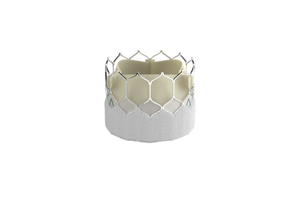Research Shows Hydrogels Help Stem Cells Repair Bone
June 30, 2014
When stem cells are used to repair bone tissues, many of them wind up migrating away from the repair site. Now researchers at the University of Rochester in New York have developed a method of keeping them in place, resulting in faster and better tissue regeneration.
|
Representation of hydrogel polymers (straight lines) trapping stem cells (light-colored figures) and water (blue). (Courtesy Michael Osadciw/University of Rochester) |
The technique, which is similar to that already used to repair other types of tissue, has never before been tried on bone, according to the researchers.
"Our success opens the door for many-- and more complicated--types of bone repair," said Danielle Benoit, PhD, assistant professor of biomedical engineering. "For example, we should now be able to pinpoint repairs within the periosteum - or outer membrane of bone material."
The researchers describe their experiments in "Degradable Hydrogels for Spatiotemporal Control of Mesenchymal Stem Cells Localized at Decellularized Bone Allografts"--scheduled for publication in Acta Biomaterialia.
The key to their success lies in encasing the stem cells in hydrogels. Benoit believed hydrogels would allow the stem cells to finish the job of initiating repairs. The research team tested this hypothesis by transplanting cells onto the surface of mouse bone grafts and studying the cell behavior both in vivo and in vitro.
The hydrogels mimic the natural tissues of the body but are specially designed to degrade and disappear before the body interprets them as foreign bodies and begins a defense response that could compromise the healing process, an additional feature that's vital to the repair process.
Benoit and her team were able to manipulate the time it took for hydrogels to dissolve by modifying groups of atoms--called degradable groups--within the polymer molecules. By introducing different degradable groups to the polymer chains, the researchers were able to control how long it took for the hydrogels to degrade.
Refresh your medical device industry knowledge at MEDevice San Diego, September 10-11, 2014. |
Benoit believes degradable hydrogels show promise in many research areas. For example, she says, it may be possible to initiate tissue regeneration after heart attacks without having a patient undergo difficult, invasive surgery. She admits, however, that a great deal of additional research will be required to arrive at this point.
Stephen Levy is a contributor to Qmed and MPMN.
Like what you're reading? Subscribe to our daily e-newsletter.
About the Author(s)
You May Also Like


.png?width=300&auto=webp&quality=80&disable=upscale)
